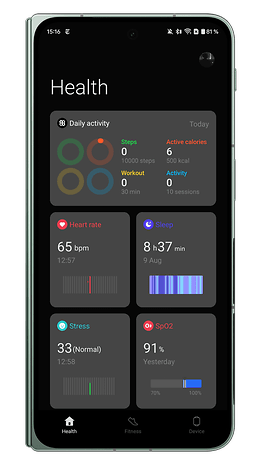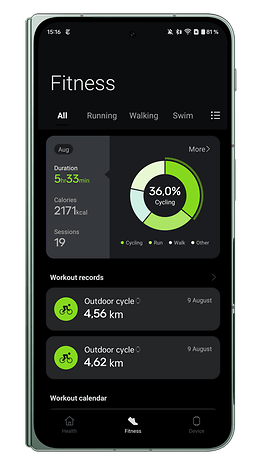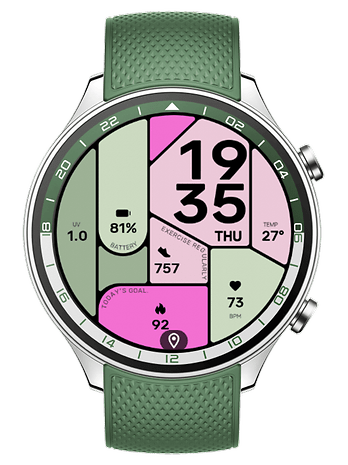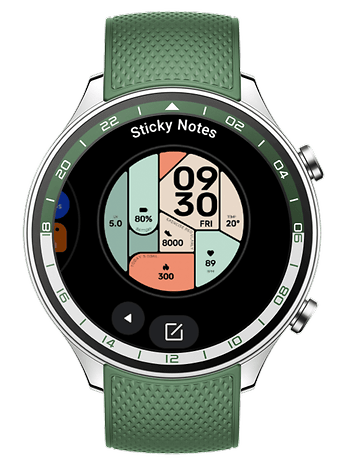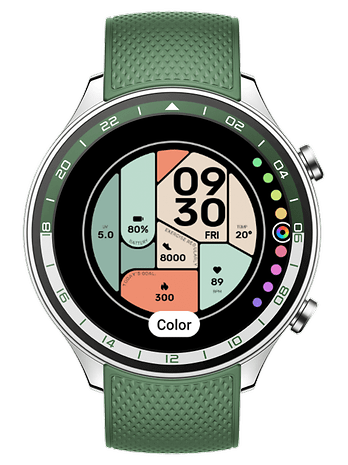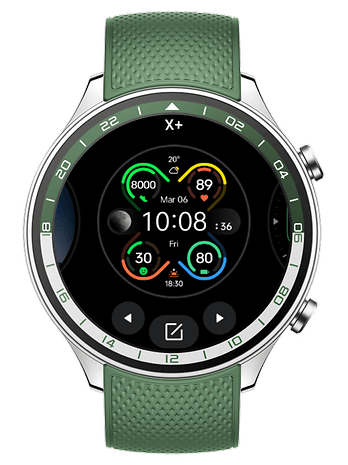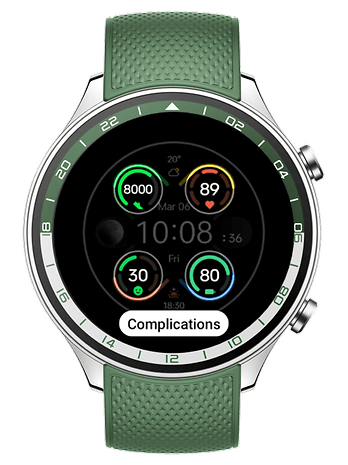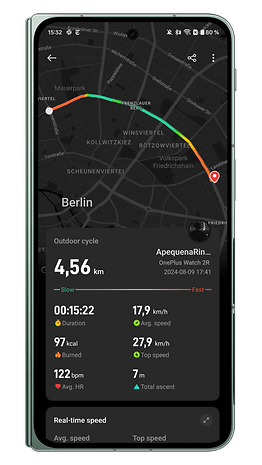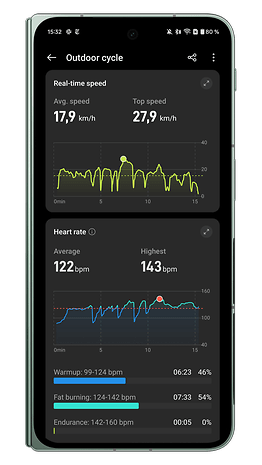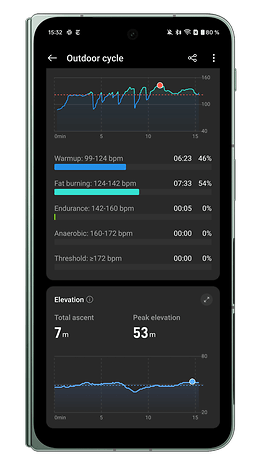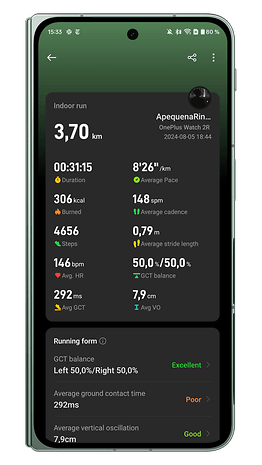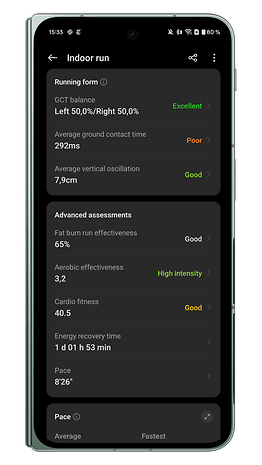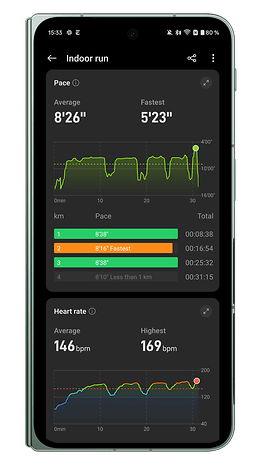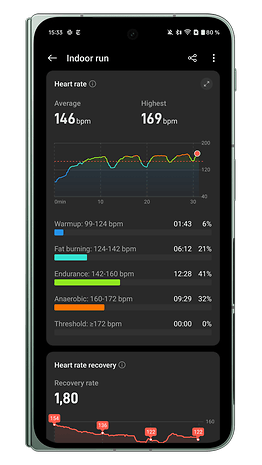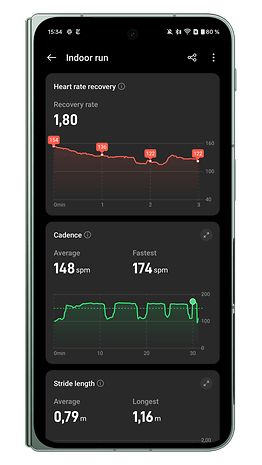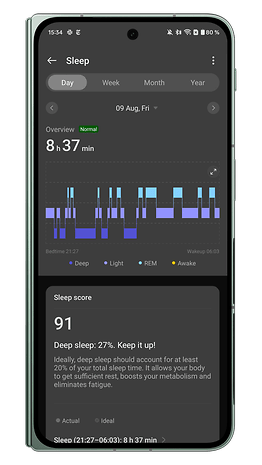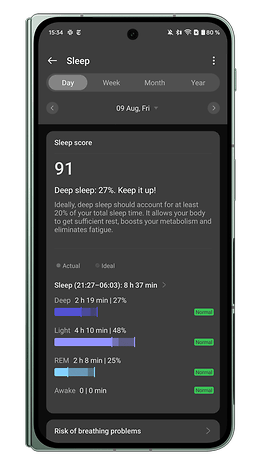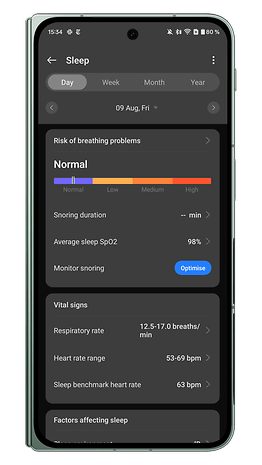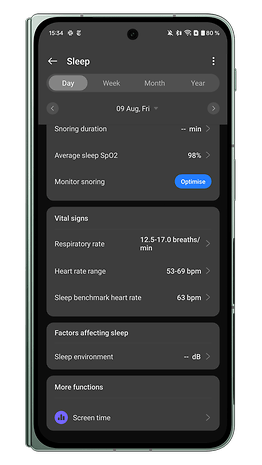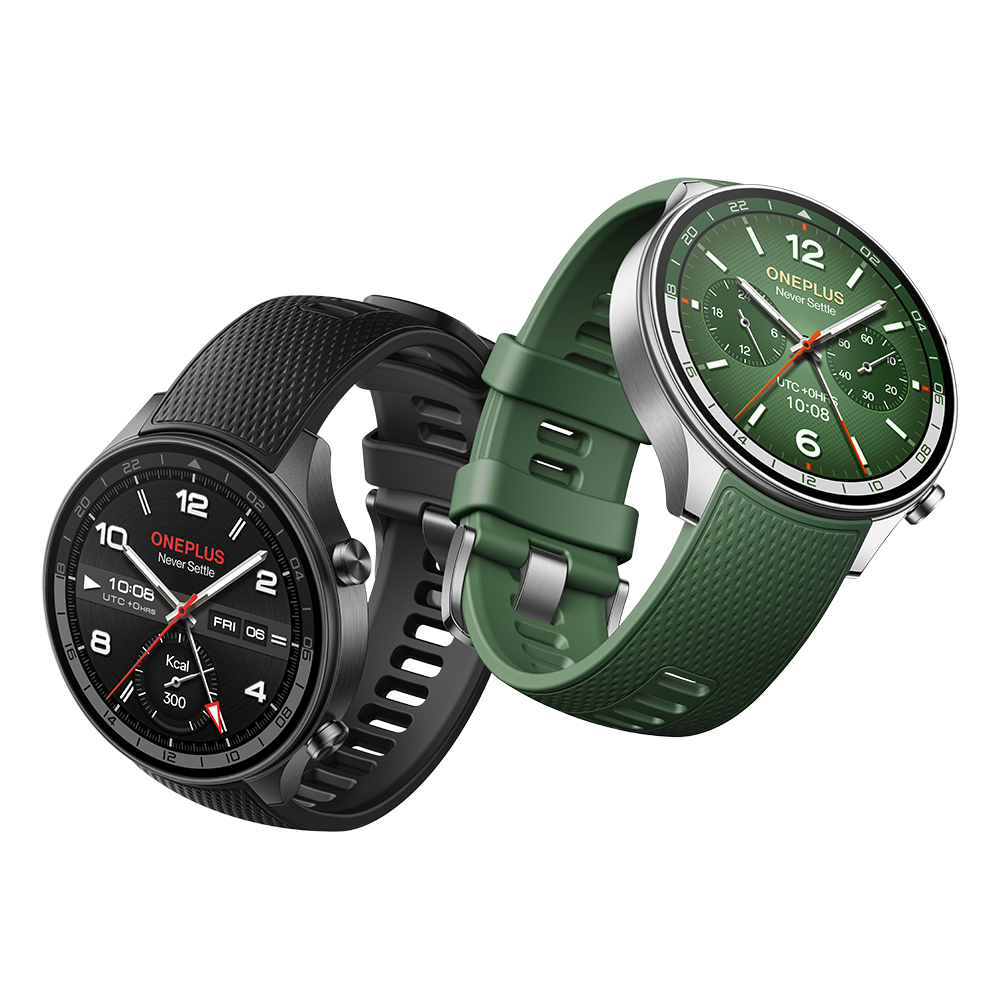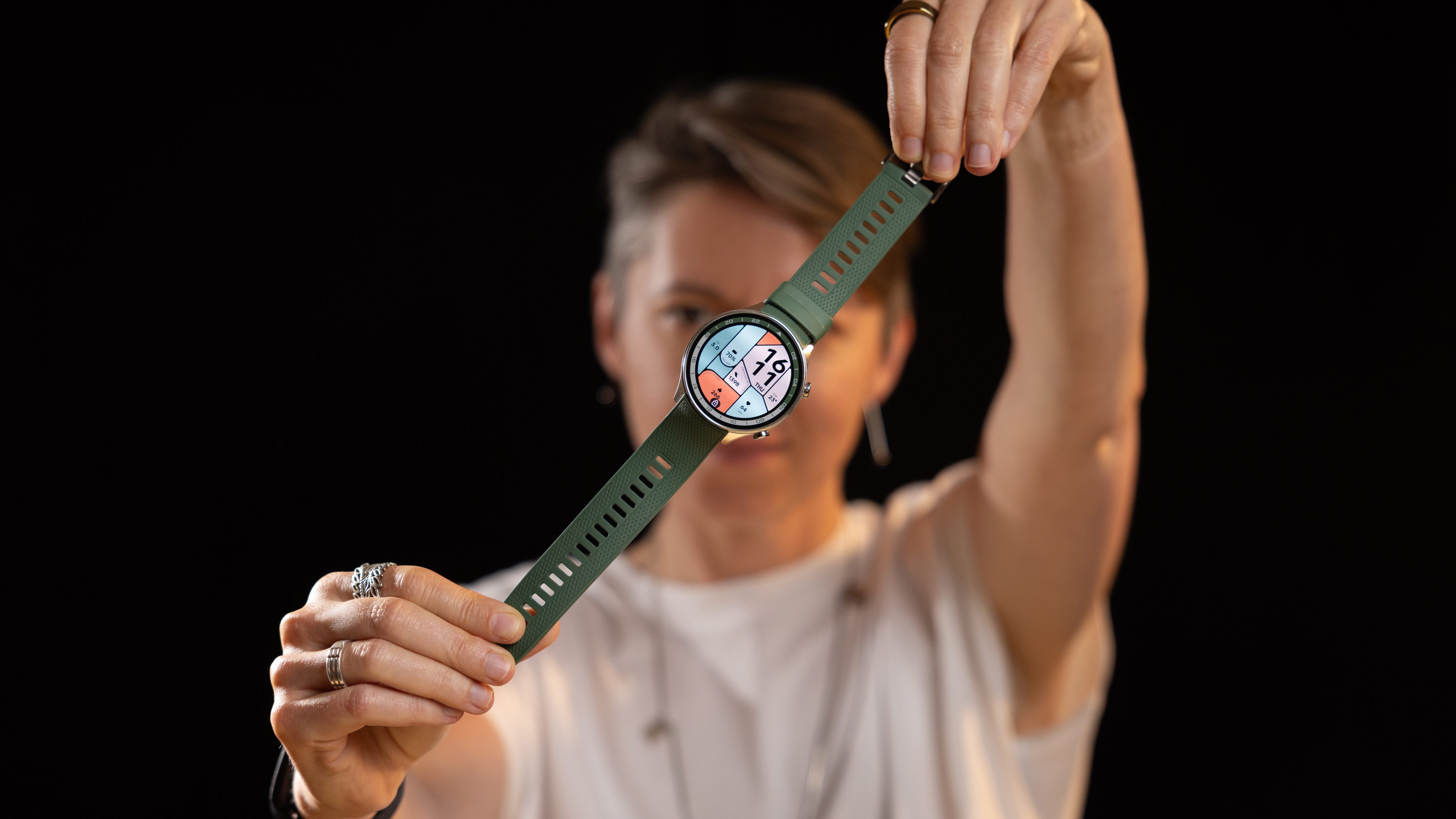
The Watch 2R is a recent addition to the OnePlus smartwatch lineup. As a more accessible version of the Watch 2, it features flagship-level hardware and runs on Wear OS by Google. This edition also includes a high-precision GPS and the OnePlus wellness features. But with so many similarities, is the Watch 2R truly unique? Find out in this review of the OnePlus Watch 2R.
Good
- 25% lighter than its predecessor
- Bright and colorful AMOLED display
- 5ATM and IP68 ratings
- Integration with Google Apps and Services
- Dual-frequency GPS
- 3-4 days battery life and fast charging
Bad
- Limited size and color options
- Prominent bezels
- No menstrual cycle tracking feature
- Sleep tracking lacks accuracy
- Fall detection is not available
- No wireless charging capabilities

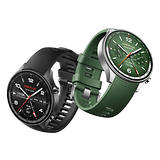
OnePlus Watch 2R: All deals
Price & Availability
The OnePlus Watch 2R is available in Forest Green or Gunmetal Gray for $229.99. You can find the device on OnePlus Store, and in early August on Amazon US.
Design & Display
The first thing to notice is that the OnePlus Watch 2R is a lighter version of the
OnePlus Watch 2 we reviewed. In fact, it’s 25% lighter, weighing just 37g without the strap, and it does feel like it. The design also looks closer to standard smartwatches, with two discreet control buttons—but no rotating crown here
.
Pros:
- Lightweight and comfortable design.
- Bright and colorful AMOLED display.
- Water-resistant with 5ATM and IP68 ratings.
Cons:
- Limited sizes and color options.
- Bezels might be too prominent for some users.
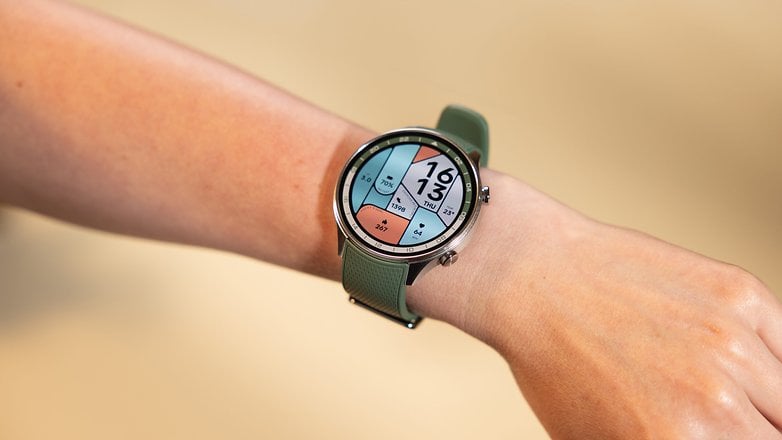
The 1.43-inch rounded display offers 1,000 nits of brightness and provides a very pleasant experience. OnePlus adds visual appeal to the smartwatch with a printed two-tone bezel, reminiscent of classic chronometers. Personally, I would prefer to see this as a software addition instead, maybe to use together with the compass sensor, but I know many people will like it as it is.
When it comes to durability, the Watch 2R is water-resistant with 5ATM and IP68 ratings, and can be used for swimming.
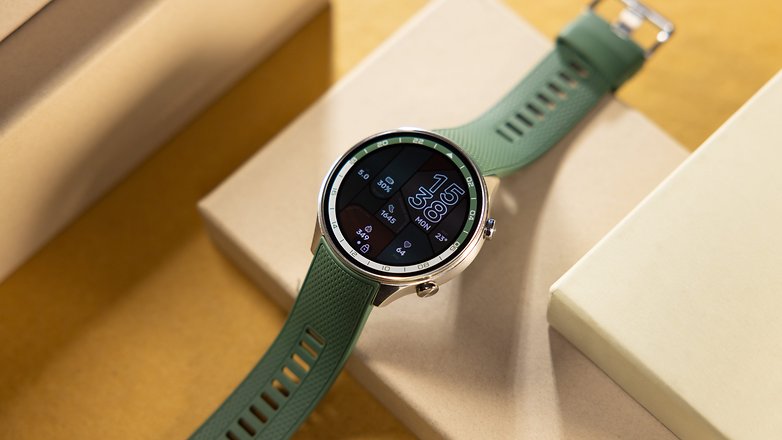
Overall, this is a well-crafted smartwatch with an aluminum alloy case, 2D glass display, and a comfortable silicone strap. It stands out slightly from the more expensive model in the lineup released in March.
However, OnePlus could have gone further by releasing a smaller version of it or at least offering two size variants, but unfortunately, they didn’t. It’s disappointing that it is only available in one size: around 47 mm. The company says they decided to make one size that fits most users and will see how the market reacts.
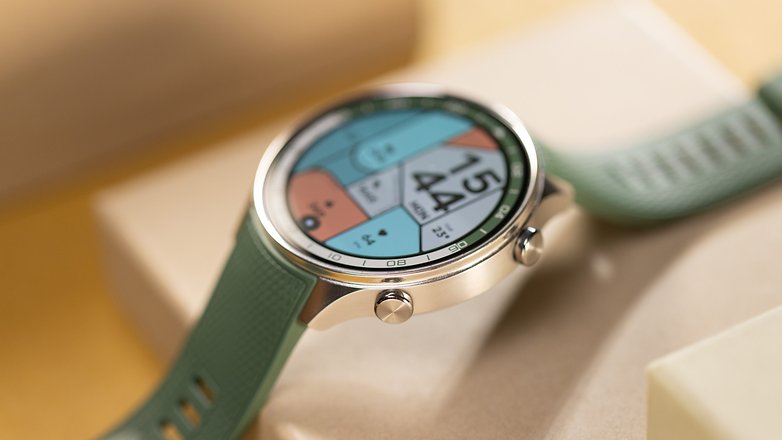
The upside of having a larger smartwatch on your wrist is that everything on the screen is magnified, making Google Maps easy to use even while biking in direct sunlight. Running stats are also easily recognizable during outdoor workouts. Plus, the touchscreen is impressively responsive.
On top of that, the straps are a breeze to detach, and the overall build quality is top-notch, ensuring everything stays securely in place.
Software & Compatibility
Running on Wear OS 4 and a real-time OS, the OnePlus Watch 2R offers a variety of Google apps and services in addition to the efficiency and customization options of the RTOS. As part of the Wear OS ecosystem, it integrates seamlessly with services like Google Health Connect and third-party apps like Strava—an appealing feature for fitness enthusiasts
The watch works seamlessly with OnePlus devices, and it is compatible only with Android smartphones. After I connected the device to the OnePlus Open (review), the pairing process was quick and easy.
Pros:
- Comprehensive Google app support.
- It integrates seamlessly with apps like Strava and Komoot for building routes.
- Wide variety of customization options.
Cons:
- Only compatible with Android devices.
- No menstrual cycle tracking feature.
- Missing a daily body index.
Just like its predecessor, the Watch 2R sports a user-friendly interface that makes navigating both the smartwatch features and the companion app, OHealth, a simple process.
However, there’s been a notable shift in the past five months: HeyTap, a developer agency under the Oppo umbrella, now spearheads the app companion development. When asked, OnePlus said they are working with Oppo, sharing technology and data to create the best user experience and solutions.
Despite the partnership with Google providing an open ecosystem of applications, there are specific features OnePlus needs to introduce, such as native menstrual cycle tracking, which is currently absent in the OnePlus Watch Series.
Another area where the app falls short is the lack of a daily body index, akin to the Readiness feature on the recently released Pixel Watch 3, the Energy Score on the Galaxy Watch 7 (first impressions), or the Recovery measure on the Whoop 4.0 (review). Additionally, OnePlus does not provide any in-depth analysis of your collected data, requiring users to cross-reference information manually for a more comprehensive experience.
Last but not least, the OnePlus Watch 2R offers over 100 watch faces, including both native and third-party options. Over time, I’ve come to appreciate them. However, there are some inconsistencies, such as the lack of interaction with the data displayed through complications, which is quite frustrating. You have a wealth of information on the screen, but you can’t access more details by simply tapping on it. This is a significant missed opportunity.
Wellness & Fitness Features
With over 100 sports modes, the Watch 2R is clearly geared toward fitness enthusiasts. It offers at least six customizable automatic sports recognition modes and features dual-frequency GPS, which proved accurate in tracking my routes and pausing running countdowns at every streetlight. On the wellness front, the watch includes sleep tracking, stress monitoring, and heart rate variability, rounding out a comprehensive health suite
.
Pros:
- Extensive sports mode variety.
- Dual-frequency GPS (L5 and L1 frequencies).
- Comprehensive health monitoring features.
Cons:
- Fall detection is not available.
- Sleep tracking lacks accuracy.
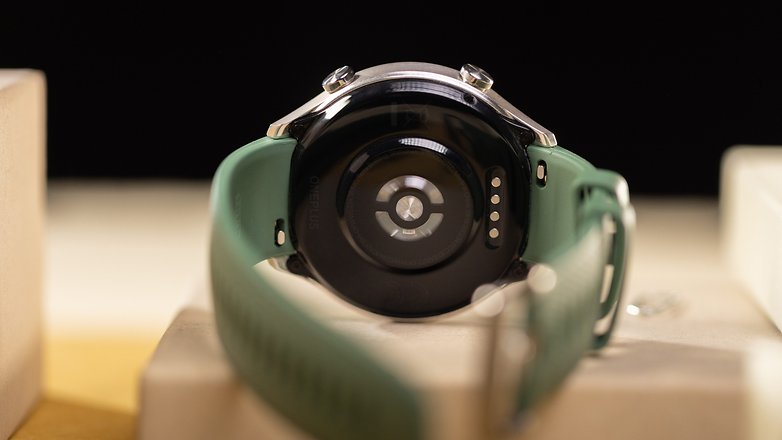
First, since this is a wellness device, not medical-grade, pinpointing accuracy isn’t my priority here. That said, I’ll be comparing it to other devices I use for heart monitoring, sleep tracking, and running workouts.
The OnePlus Watch 2R features sensors like an optical heart rate monitor and pulse oximeter. The heart rate sensor tracks workout zones, sleep patterns, and HRV for stress scores, while the pulse oximeter measures SpO2 levels.
I’ve been testing the Watch 2R alongside the Whoop 4.0 (review) and the RingConn Gen 2 smart ring, which I recently reviewed. To assess the accuracy of the heart rate sensor, I also compared its results with a more reliable Wahoo Tickr chest strap.
Running Stats
For the Watch 2R test, I primarily ran indoors, so I won’t be covering GPS accuracy in that context. However, I did take it on outdoor cycling routes, albeit limited to the city center.
The dual-band GPS performed admirably, delivering reliable data even among medium-sized buildings. It’s worth noting that Berlin’s boulevards are quite wide, so the GPS wasn’t pushed to its limits. For a more rigorous GPS comparison, you might want to check out the Watch 2 review alongside the Amazfit Balance smartwatch.
That said, the running metrics haven’t changed much from what OnePlus offered with the Watch 2, but that’s not a bad thing. The Watch 2R still delivers a robust set of features for both casual joggers and serious runners. It tracks distance, time, pace (including average and top speeds), calories burned, and steps, while also measuring cadence to help fine-tune your running efficiency.
Heart rate monitoring is continuous, giving you insights into average and peak levels, and it breaks down heart rate zones to assess workout intensity. The watch also offers deeper insights like stride length, running power, and elevation changes, making it great for analyzing performance across different terrains.
I especially like the recovery time estimate, which helps plan training sessions more effectively. Metrics like Ground Contact Time balance and Average Vertical Oscillation are useful for improving running technique. The VO2 max estimate adds to its features, making it a strong tool for tracking overall fitness and running performance.
When it comes to real-time heart rate monitoring, the Watch 2 holds its own against the chest strap. The Wahoo app recorded an average heart rate of 150 bpm with a max of 175 bpm, while the Watch 2 reported an average of 151 bpm and a max of 176 bpm. That’s impressively close.
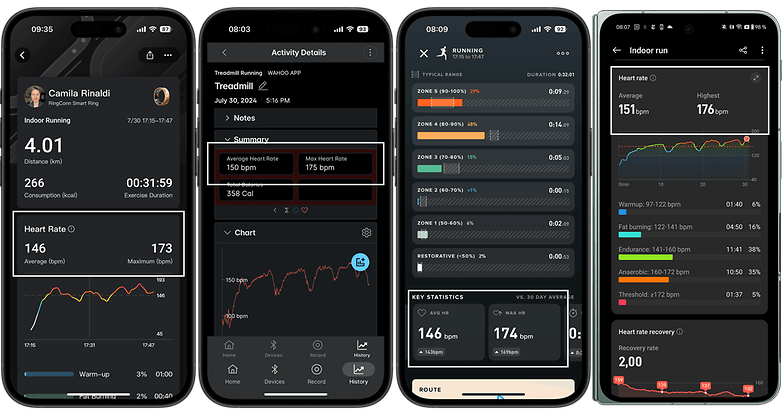
Finally, when it comes to outdoor workouts, the OnePlus Watch 2R is missing a crucial feature: fall detection. This absence is particularly noticeable for those who prioritize safety during activities like running or cycling, where unexpected falls can happen.
Sleep stats
The OnePlus Watch 2R offers a thorough sleep tracking feature, allowing users to see not just how long they sleep, but also how much time they spend in each sleep stage—deep, light, and REM. I’m particularly fond of sleep tracking in wearable devices, and this one makes it easy to analyze your sleep patterns with a straightforward chart and a sleep score that helps you gauge the quality of your rest.
In addition to tracking your sleep duration and quality, the OnePlus Watch 2 also monitors key indicators like breathing and heart rate throughout the night. It even provides personalized tips, such as the best time to go to bed, to help enhance your sleep. These features highlight the watch’s strong emphasis on health and well-being.
Honestly, compared to the Watch 2, this variant is far more comfortable for bedtime, thanks to being 25% lighter.
As I mentioned in the software section, the development of OHealth has shifted to HeyTap, a developer under the Oppo umbrella. While I still find the sleep metrics on OnePlus smartwatches to be more generous, the overall presentation has definitely improved. However, it’s still not as precise as what you’d get with devices like the Apple Watch Series 9.
That said, when it comes to sleep stage metrics, the OnePlus Watch 2R reported a sleep quality score of 88, and a total sleep duration of 7 hours and 12 minutes. The breakdown? 0% awake, 19% REM, 51% light sleep, and 30% deep sleep.
These figures align with both the RingConn Gen 2 and Whoop, showing similar sleep stage distributions and durations. However, the OnePlus Watch 2R tends to be more generous with deep sleep metrics, which might give users a misleading impression of their sleep quality.
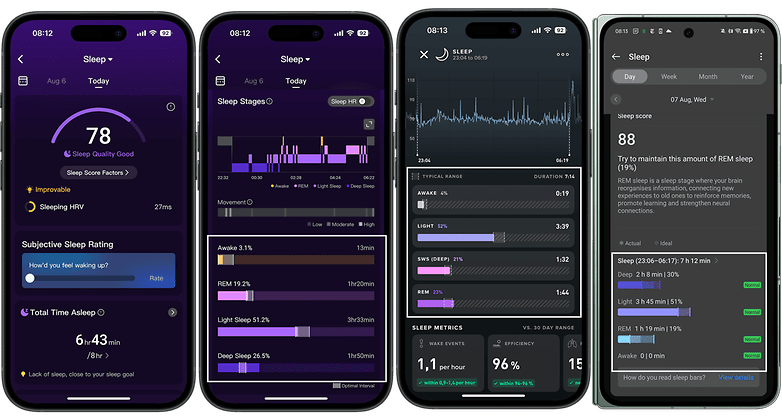
Battery Life & Charging
The OnePlus Watch 2R features a substantial 500 mAh battery, providing up to four days of battery life, or two days with heavier use. It also includes two different battery-saving modes: Smart and Power Saver. The watch supports 7.5W fast charging, with a full charge taking just one hour, which is above average
.
Pros:
- Massive 500 mAh battery capacity.
- Fast charging capabilities.
Cons:
- No wireless charging capabilities.
This latest iteration of the OnePlus Watch lineup comes equipped with a dual-chip system, featuring the Snapdragon W5 and BES2700. This combination delivers enhanced battery efficiency and long-lasting performance. You will not leave hanging out with this device for at least 48 hours.
I put the device through its paces with all sensors activated, and even on days packed with a variety of workouts, it managed to hold its own for two full days. Granted, the last 20% of battery life was under Power Saver mode, which does limit functionality somewhat, but it’s a welcome feature when you need to stretch the remaining juice. Personally, I engage power-saving modes on all my devices once they hit the 20-15% mark, and this watch is no exception.
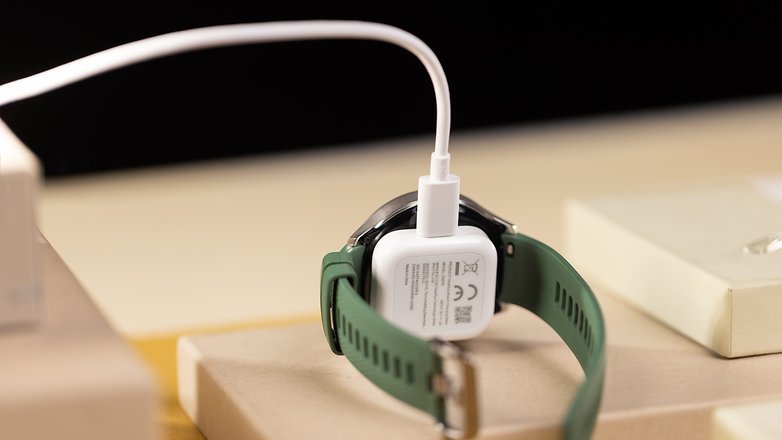
On the downside, OnePlus opted not to include wireless charging capabilities in this model, which is a notable omission given that many of its competitors have embraced this convenient feature. For users accustomed to simply placing their devices on a charging pad, the absence of wireless charging might feel like a step backward.
OnePlus Watch 2R technical specifications
| OnePlus Watch 2R | |
|---|---|
| Display |
|
| Sensors |
|
| Memory |
|
| Battery |
|
| Connectivity | |
| IP Certification | |
| Materials |
|
| Dimensions and weight |
|
| Colors |
|
| Compatibility |
|
Final verdict
On paper, the OnePlus Watch 2R packs impressive hardware, coming close to its more premium sibling. The key differences? It lacks military-grade durability, display toughness, and a few design flourishes. But it still features the same dual-engine design, dual-frequency GPS, and enhanced software—all for $70 less.
It’s also lighter, but the lack of two size options is a bit of a letdown, something I—and probably many others—would have appreciated.
With so many similarities, is the Watch 2R really that unique? Surprisingly, yes—even I didn’t expect to reach this conclusion. While the hardware isn’t much different from the Watch 2, the experience is noticeably distinct. It sits better on the wrist, feels lighter, the metrics seem more accurate, and it’s more affordable.
If you’re a OnePlus fan, it’s a solid choice. If not, there are better options out there, but for around $200, this device stands out for what it offers.
What are your thoughts on the OnePlus Watch 2R? Would you buy it? Why?

